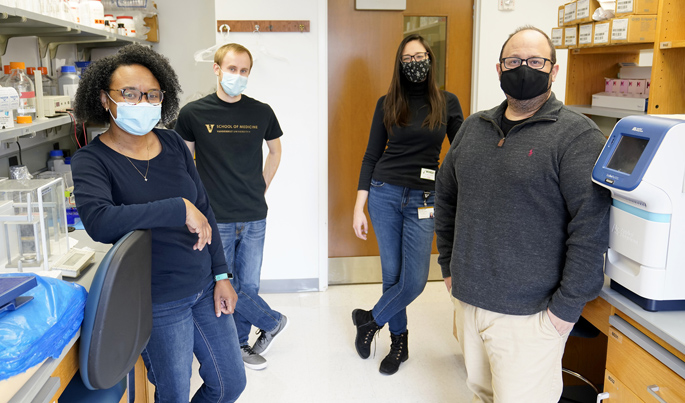
Vanderbilt University Medical Center investigators have identified a key molecular player in the early events of the inflammatory response to infection. The findings suggest new therapeutic possibilities for enhancing the inflammatory response to protect against pathogens and for blocking inflammation gone awry in diseases like arthritis and atherosclerosis.
The studies, reported in the Proceedings of the National Academy of Sciences, bring together different parts of the “story” of early inflammatory signaling, said C. Henrique Serezani, PhD, associate professor of Medicine and of Pathology, Microbiology and Immunology.
Serezani and his colleagues were exploring roles for various parts of the inflammatory response — the essential inflammatory mediator interleukin 1 beta (IL-1 beta), the bioactive lipid leukotriene B4 (LTB4), and a multi-protein signaling platform called the inflammasome.
The role of G protein-coupled receptor ligands like LTB4 in activation of the inflammasome — which is required for IL-1 beta production — remains to be fully determined, Serezani said.
The VUMC team found that LTB4, which is rapidly produced in response to infection, enhances both IL-1 beta expression and inflammasome-dependent IL-1 beta maturation and secretion in mouse and human phagocytes (immune system cells). They demonstrated that LTB4 is required for the protective effects of IL-1 beta in an animal model of skin infection.
“Our laboratory is the first to combine these different parts of the inflammatory response together and show in vivo relevance,” Serezani said. “LTB4 can actually shape how the inflammasome is activated, which will end up improving the inflammatory response or being detrimental as seen during chronic inflammatory diseases.”
The findings can potentially be used to help defend against infections. The investigators are studying whether an ointment containing LTB4 plus antibiotics is effective against antibiotic-resistant bacteria that cause skin infections.
Boosting the immune response with LTB4 might also be useful for improving the host defense in people who are immunosuppressed, such as those who have undergone an organ transplant or are living with HIV infection, Serezani said.
In conditions where the inflammasome is hyper-activated and driving too much inflammation, the findings suggest that blocking LTB4 may be a promising therapeutic strategy. Serezani and his team are testing this idea in an animal model of sepsis.
“In the sepsis model, we see an overly activated immune response — IL-1 beta and LTB4 are both high — so we are trying to prevent LTB4 actions and reverse mortality from sepsis,” he said.
Drugs that block the LTB4 receptor are currently in clinical testing for arthritis, chronic obstructive pulmonary disease (COPD), and other conditions.
Ana Carolina Guerta Salina and Stephanie Brandt are co-first authors of the PNAS paper. Other Vanderbilt contributors included Nathan Klopfenstein, Amondrea Blackman, Júlia Miranda Ribeiro Bazzano and Anderson Sá-Nunes. The research was supported in part by grants from the National Institutes of Health (grants HL124159, AI149207, AI060519, AI138932).















